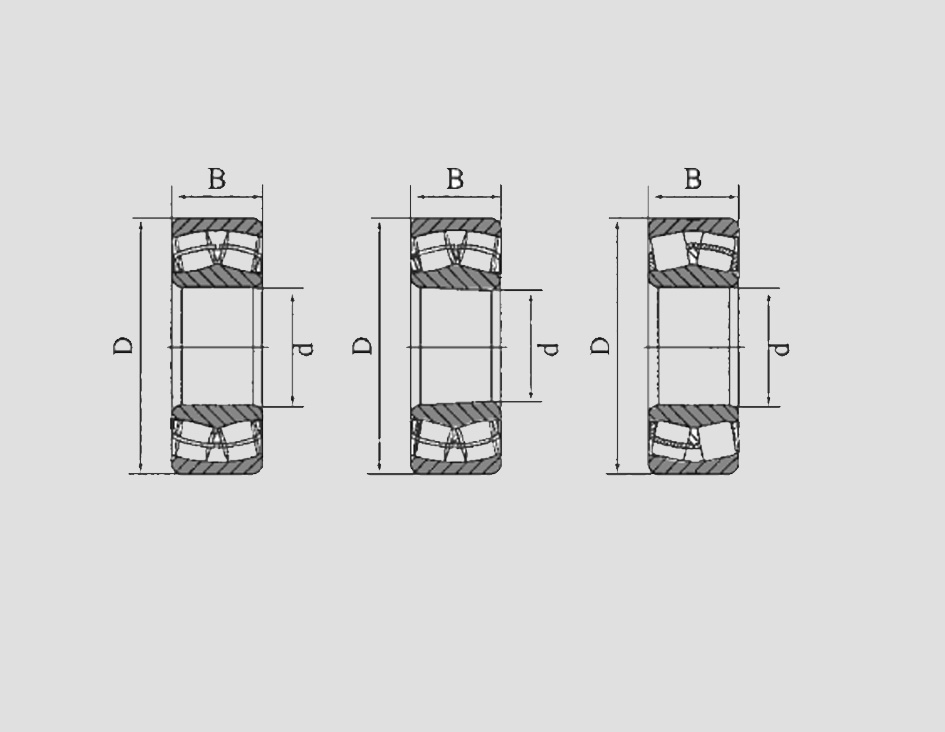
Aug . 11, 2024 05:42 Back to list
Understanding the Tolerances for Deep Groove Ball Bearings in Engineering Applications
Understanding Deep Groove Ball Bearing Tolerances
Deep groove ball bearings are among the most widely used types of bearings in various machines and applications due to their versatility, durability, and ability to handle both radial and axial loads. However, the performance and longevity of these bearings greatly depend on the precise tolerances established during manufacturing. Understanding these tolerances is crucial for engineers and manufacturers to ensure the optimal functionality of the bearings in their applications.
What are Tolerances?
Tolerances refer to the permissible limits of variation in a physical dimension. In the context of deep groove ball bearings, tolerances apply to several key dimensions such as bore diameter, outer diameter, and width, as well as the radial and axial runout. These tolerances are critical because they dictate the fit between the bearing and its housing or shaft, which in turn affects the bearing’s performance, lifespan, and reliability.
Importance of Tolerances in Deep Groove Ball Bearings
1. Fit and Functionality Proper tolerances enable the bearing to have a snug fit with its housing and shaft. A loose fit can result in excessive play, leading to vibrations, increased wear, and premature failure of the bearing. Conversely, an excessively tight fit can increase friction, generating heat and causing the bearing to seize.
2. Load Distribution When the sculpted contours of the bearing raceway are manufactured within the correct tolerances, they ensure even load distribution across the rolling elements. This balance is essential for optimal performance and longevity, as uneven load distribution can lead to localized failures.
deep groove ball bearing tolerances

3. Noise and Vibration Reduction Bearings with precise tolerances generally operate more smoothly, producing less noise and vibration. This is particularly critical in applications such as electric motors and automotive components where noise reduction is a priority.
4. Interchangeability High-precision bearings that adhere to standardized tolerances allow for interchangeability across different manufacturers. This is advantageous for maintenance and replacement, making it easier for engineers to source bearings without worrying about compatibility.
Tolerance Classes
Deep groove ball bearings are classified into different tolerance classes, typically designated as P0, P6, P5, and P4—each representing a different level of precision. The most commonly used tolerance class for general applications is P0, while P6, P5, and P4 are used for more precise requirements.
- P0 (Normal Tolerance) Suitable for most standard applications, providing good performance without extensive testing or high costs. - P6 (Abnormal Tolerance) Offers improved performance for applications that demand higher precision, reducing noise and vibration even further. - P5 (High Precision) Generally used in high-speed applications where minimal runout and higher accuracy are critical. - P4 (Ultra High Precision) Utilized in advanced engineering applications such as aerospace and medical devices, where exact tolerances are essential.
Conclusion
Understanding the tolerances of deep groove ball bearings is crucial for anyone involved in their selection, application, or manufacture. Proper tolerances not only enhance the performance and reliability of the bearings but also significantly affect the overall efficiency and lifespan of the machines they are integrated into. As industries continue to advance, focusing on the precise manufacturing of these bearings will remain essential for maintaining competitive edge and meeting the stringent demands of modern engineering applications.
Latest news
-
Industrial Machine Bearings: the core hub of mechanical operation
NewsAug.06,2025
-
Deep Groove Ball Bearing: A Dynamic "Elf" Operating Mechanically
NewsAug.06,2025
-
Compact craftsmanship: the way to optimize the space of Concrete Mixer Bearings
NewsAug.06,2025
-
Combine Harvester Bearings: The 'Steel Backbone' of Modern Agriculture
NewsAug.06,2025
-
Bearing Machinery: a flexible support hub for mechanical operation
NewsAug.06,2025
-
Agricultural Equipment Bearings: A Power Hub for Intensive Cultivation under Radial Space Constraints
NewsAug.06,2025
